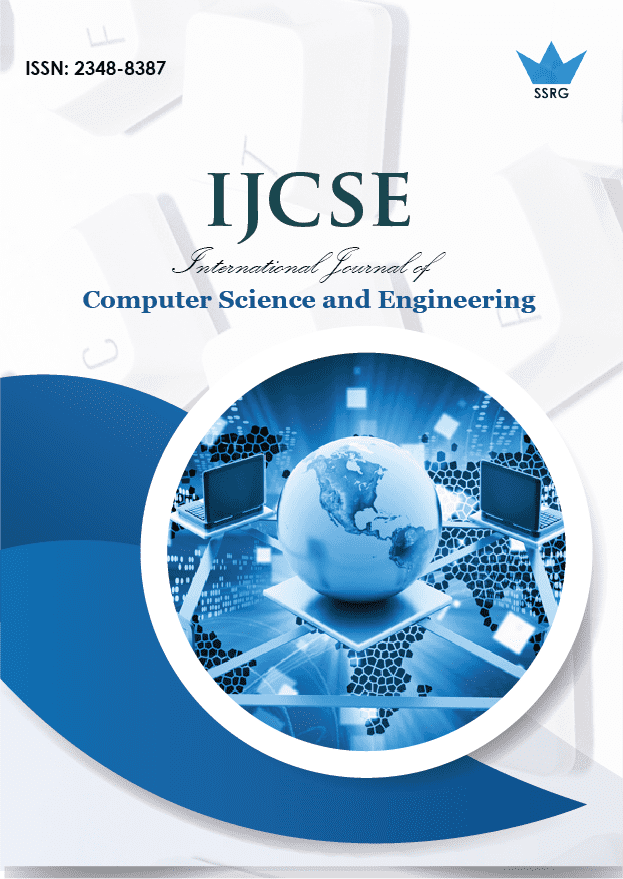Encryption and Decryption Images by Neural Network Algorithms

| International Journal of Computer Science and Engineering |
| © 2025 by SSRG - IJCSE Journal |
| Volume 12 Issue 8 |
| Year of Publication : 2025 |
| Authors : AliAkbar Ridha Hussein, Ismael Hadi Challoob, Hayfaa Abdulzahra Atee |
How to Cite?
AliAkbar Ridha Hussein, Ismael Hadi Challoob, Hayfaa Abdulzahra Atee, "Encryption and Decryption Images by Neural Network Algorithms," SSRG International Journal of Computer Science and Engineering , vol. 12, no. 8, pp. 21-26, 2025. Crossref, https://doi.org/10.14445/23488387/IJCSE-V12I8P103
Abstract:
The field of digital document protection has witnessed increasing interest due to the significant expansion of its use, which has necessitated the proposal of numerous encryption techniques to enhance security, quality, and efficiency. In this study, three different encryption techniques were compared to determine the most appropriate in terms of overall performance. The study included five types of digital documents in various formats: JPEG, PNG, BMP, TIFF, and PDF. The number of documents in each category was 3,000, with a total of 15,000 digital documents. The research focused on three main evaluation criteria: quality, security, and the time required for the encryption and decryption processes. The results showed that the best techniques in terms of quality (i.e., the Lowest Mean Squared Error (MSE)) were: Vector Quantization (VQ), Visual Cryptography (VC), and Mirror-like Image Encryption (MIE). These techniques outperformed each other in preserving image resolution after decryption. In terms of security and speed, Double Random Phase Encoding (DRPE) technology ranked first, recording the highest mean square error of 24365507, indicating the difficulty of recovering the original data if compromised. The shortest execution time was only 0.009612 seconds. Research also revealed that the type of digital document (extension) directly impacted the results, with PDF showing the fastest encryption and decryption time compared to other formats. These results support the importance of choosing the appropriate technology based on the type of document and the purpose of encryption—whether to ensure quality, achieve security, or save time—which enhances organizations' ability to protect their digital data more efficiently and effectively.
Keywords:
Digital Document Encryption, Neural Networks, Image Security, Encryption Performance Evaluation, File Format Impact, DRPE and VQ Techniques, Mean Squared Error.
References:
[1] Abrar Haider, and Andy Koronios, “Promises of Open Source Software for Australian Government Agencies-An Exploratory Study,” PACIS 2009 Proceedings, 2009.
[Google Scholar] [Publisher Link]
[2] Asisa Kumar Panigrahy et al., “A Faster and Robust Artificial Neural Network based Image Encryption Technique with Improved SSIM,” IEEE Access, vol. 12, pp. 10818-10833, 2024.
[CrossRef] [Google Scholar] [Publisher Link]
[3] Sixing Xi et al., “Neural Network-based Denoising and Capacity Enhancement Techniques for Optical Multi-image Encryption Systems,” Engineering Research Express, vol. 7, no. 2, 2025.
[CrossRef] [Google Scholar] [Publisher Link]
[4] Juncan Deng et al., “ViM-VQ: Efficient Post-Training Vector Quantization for Visual Mamba,” arXiv preprint arXiv:2503.09509, 2025.
[CrossRef] [Google Scholar] [Publisher Link]
[5] Xuan Yu, Julang Chen, and Xiaogang Wang, “Optical Cryptography based on Computational Ghost Imaging and Computer-Generated Holography,” Optics and Lasers in Engineering, vol. 186, 2025.
[CrossRef] [Google Scholar] [Publisher Link]
[6] Michael D. Singh et al., “Reflection Mode Polarimetry Guides Laser Mass Spectrometry to Diagnostically Important Regions of Human Breast Cancer Tissue,” Scientific Reports, vol. 14, 2024.[CrossRef] [Google Scholar] [Publisher Link]

 10.14445/23488387/IJCSE-V12I8P103
10.14445/23488387/IJCSE-V12I8P103